Map Of Quang Binh: Exploring Vietnam’s Kingdom Of Caves
When talking about Quang Binh, one thinks of a narrow yet endearing land, bathed in sun and wind all year round—a land that may seem barren but holds within it a wealth of cultural and natural treasures. With The Map of Quang Binh, visitors can explore ancient, lush jungles and majestic caves, while also experiencing the warm, sincere hospitality of the local people
Geography & Administrative Divisions
Located along Vietnam’s central coast, Quang Binh is an ideal destination for nature lovers and those seeking rich cultural heritage. Known as the “Kingdom of Caves,” this land boasts over 300 caves of various sizes and a diverse ecosystem of forests and seas—offering visitors an unforgettable journey through Central Vietnam.
Beyond its magnificent cave systems, Quang Binh also captivates travelers with pristine beaches and meaningful historical sites. A trip to Quang Binh is the perfect blend of thrilling nature exploration, seaside relaxation, and immersive cultural and historical experiences.
Here are some key geographical and administrative facts about quang binh:
Total area: approximately 8,000 km²
Population: around 936,000 people
Topography: mostly mountainous and hilly in the west, coastal plains in the east; home to karst landscapes, caves, rivers, and national parks
Borders: shares borders with Ha Tinh (north), Quang Tri (south), Laos (west), and the East Sea (east)
Region: North Central Coast of Vietnam
Administratively, Quang Binh includes:
1 provincial city: Dong Hoi City (provincial capital)
6 districts: Bo Trach, Quang Ninh, Le Thuy, Quang Trach, Tuyen Hoa, Minh Hoa
1 town: Ba Don Town
Note: Some districts have merged recently due to administrative reforms. Always check the latest official map for the most accurate district boundaries.
Climate & Best Time To Visit
Quang Binh’s weather features a typical tropical monsoon climate, with two distinct seasons:
Dry season (March to August): This is the best time to visit Quang Binh. The weather is sunny with minimal rainfall—perfect for outdoor activities such as cave exploration, swimming, boating on the Chay River, or trekking through Phong Nha’s forests.
Rainy season (September to February): Heavy rainfall is common during this period, especially from October to November when storms are most frequent, making it less ideal for travel. However, around the Lunar New Year, visitors can still enjoy the festive atmosphere and experience local traditional celebrations.
Top Attractions And Natural Wonders
Phong Nha-Ke Bang National Park
Phong Nha–Ke Bang National Park is a UNESCO World Natural Heritage Site, recognized twice for its outstanding universal value. In addition to being one of Vietnam’s largest primary forest reserves with a rich and diverse ecosystem, the park is also home to the highest concentration of natural caves in the world—many of which are among the longest ever discovered. Famous cave complexes such as Phong Nha Cave, Paradise Cave, Tien Son Cave, and the legendary Son Doong Cave boast breathtaking beauty that words simply cannot describe.
Phong Nha Cave
Phong Nha Cave is one of the most famous caves within the national park, often hailed as the “Best Wonder of the Southern Skies.” Located about 45 kilometers from Dong Hoi City, the cave is renowned for its extensive network of grottoes and emerald underground rivers. It stretches over 7 kilometers, comprising 14 interconnected chambers and an underground river system that extends more than 13 kilometers.
Traveling to Phong Nha in Quang Binh, visitors can take a boat ride upstream along the Son River to admire breathtaking stalactites formed over 400 million years ago and striking natural rock formations in various shapes. Phong Nha Cave is an ideal destination for nature lovers and those fascinated by Earth’s ancient geological processes.
Paradise Cave (Thien Duong Cave)
Paradise Cave, also poetically known as the “Underground Royal Palace,” is considered one of the most magnificent natural wonders ever crafted by nature. Stretching a total of 31.4 kilometers with sections reaching 100 to 150 meters in width, this vast cavern is recognized as the longest dry cave in Asia and ranks among the world’s most spectacular cave systems.
Unlike Phong Nha Cave, Paradise Cave is a dry cave, with no underground river flowing through it. Inside, the temperature remains about 16°C cooler than the outside, offering a refreshing contrast. As visitors step inside, they are instantly captivated by the cave’s awe-inspiring formations—elaborate stalactites and stalagmites that shimmer with mystery and grandeur, creating an otherworldly atmosphere.
Chay River-Dark Cave
Chay River and Dark Cave impress visitors with their emerald-green waters winding through limestone mountains and a diverse ecosystem. The Dark Cave stands out with its mysterious atmosphere, where scarce natural light adds to the uniqueness of the exploration experience.
Here, travelers can do more than just sightseeing—they can zipline across the river, kayak along its calm surface, or take a rejuvenating dip in natural mineral mud. Chay River–Dark Cave is the perfect destination for those seeking a blend of nature exploration and adrenaline-filled adventure.
Son Doong Cave
Son Doong Cave is the largest natural cave in the world, located within the Phong Nha–Ke Bang cave system. It was formed approximately 2 to 5 million years ago.
The cave is truly awe-inspiring, stretching about 9 kilometers in length, with ceilings over 200 meters high and a width of more than 150 meters—large enough to fit a 40-story skyscraper. Inside, it houses an underground river, ancient coral fossils, and record-breaking stalagmites. Especially remarkable are two massive sinkholes, or “skylights,” through which sunlight streams in, allowing entire tropical forests to grow within the cave.
Currently, Son Doong is not open for mass tourism. To witness its breathtaking, otherworldly beauty, travelers must join specially licensed adventure tours that are strictly limited in number.
Ozo Treetop Park
Ozo Park in Quang Binh is a popular ecotourism destination, located about a 30-minute drive from both Phong Nha Cave and Son Doong Cave. Covering a large area, Ozo Park attracts visitors with Vietnam’s longest treetop adventure course and a wide range of outdoor activities, including kayaking, stream bathing, water slides, water hammocks, and fish massage.
What makes Ozo Park special is its lush greenery, unspoiled natural scenery, and environmentally friendly infrastructure—offering a refreshing and immersive nature experience. It’s an ideal spot for families, groups of friends, or team outings
Mooc Spring
Located about 10 kilometers from Phong Nha town, Mooc Spring is often called the “green paradise” nestled in the heart of the tropical forest. With its cool, crystal-clear waters year-round and rich biodiversity, it’s a perfect spot for relaxation, swimming, picnicking, or snapping dreamy check-in photos. A gently curving bamboo bridge over the stream and simple thatched huts complete the peaceful, poetic atmosphere of this hidden gem.
Nhat Le Beach
Nhat Le Beach is one of the most beautiful beaches to visit if you’re traveling to Dong Hoi, Quang Binh, Vietnam. With a mild climate and a tourist season that lasts from April to September, Nhat Le Beach is ideal for year-round travel and serves as a great escape from the scorching summer heat.
What makes Nhat Le so captivating is its remarkably clear blue water. Despite being close to the city center, the beach still retains its wild, untouched beauty. Spend some time here to witness the stunning, vibrant sunsets that paint the horizon in breathtaking colors.
Mother Suot’s Monument
Just a few minutes away, the Mother Suot’s Monument stands solemnly on the banks of the Nhat Le River. It honors Vietnamese Heroic Mother Nguyen Thi Suot, who bravely ferried soldiers, the wounded, and ammunition across the river during the 1960s in the Vietnam War
The monument is not only a meaningful historical site but also a place where visitors and locals come to honor and remember the sacrifices of past generations. Here, you’ll feel a solemn and reflective atmosphere that invites quiet contemplation.
Quang Phu Sand Dune
Located about 8 km from the center of Dong Hoi City, this destination is best explored by renting a motorbike for more flexibility. Be prepared to be amazed by the untouched natural beauty of this Quang Binh attraction.
You’ll be captivated by the crystal-white sand stretching endlessly toward the blue sea. Dotted across the sand dunes are patches of green and the earthy hues of tram trees, bravely growing and reaching for the sky each day.
Don’t miss the chance to try sandboarding at the Quang Phu dunes—a fun-filled activity that brings back childhood memories and lets you laugh freely with friends and family.
Da Nhay Beach
Da Nhay Beach unfolds like a raw natural painting, where rock formations have been sculpted into unique shapes by the relentless waves of the sea. The name “Da Nhay,” meaning “Dancing Rocks,” comes from the image of rocks appearing to dance in various shapes. This place is considered a natural masterpiece—an ideal destination for swimming, sightseeing, and capturing stunning check-in photos with impressive backgrounds.
Food And Cuisine
Chao Canh (Quang Binh‑style rice‑flour noodle soup)
Chao canh Quang Binh boasts a rich, savory flavor from ingredients like pork, fish, shrimp, and more—especially snakehead fish, which is considered essential in this dish. A bowl of chao canh is a harmonious blend of colors: the white of thick rice noodles, the golden hue of fish fillets, the pink of shrimp, and the vibrant green of scallions—all coming together to create a distinctive taste unique to Quang Binh.
Banh Bot Loc (Clear tapioca dumplings with shrimp/pork)
The outer layer of banh bot loc is thin, translucent, and pleasantly chewy. The filling typically includes shrimp—caught near river mouths, giving it a naturally sweet and slightly salty flavor—along with seasoned stir-fried pork and wood ear mushrooms, fragrant with black pepper. Quang Binh’s banh bot loc becomes truly memorable when dipped in sweet and sour fish sauce and enjoyed with a few fresh herbs.
Banh Nam (Steamed rice‑flour cakes)
If you’re unsure what to eat while traveling in Quang Binh, banh nam is a must-try. Made from smooth white rice flour, this soft flat rice cake is topped with a savory filling of minced shrimp, pork, and wood ear mushrooms stir-fried with fragrant garlic and shallots until golden. Served warm and wrapped in banana leaves, the cake is best enjoyed with Quang Binh’s signature rich fish sauce.
Nhat Le Seafood
Just a walk along the Nhat Le beach embankment, and visitors will find countless eateries and seafood restaurants. There’s a wide variety to choose from—fish, shrimp, clams, mussels, snails, squid, and more—cooked in simple styles such as steaming, grilling, or boiling based on the guest’s preference.
Though the preparation is simple, Quang Binh’s seafood satisfies even the most discerning palates, thanks to its vibrant color, rich aroma, and exceptional taste. The natural sweetness, freshness, and richness are perfectly preserved. Especially notable is the squid, which is exceptionally tender and sweet due to the high salinity of Quang Binh’s coastal waters.
Ca Khoai Hotpot
The hotpot broth is made from tomatoes, pineapple, shallots, and aromatic herbs, creating a mildly tangy and refreshing flavor. The ca khoai doesn’t require long cooking—just dip it briefly into the boiling broth and it becomes perfectly tender, silky, and naturally sweet. This hotpot is typically served with water spinach, crown daisy, banana blossom, and fresh vermicelli noodles.
Cactus‐stem soup
Though it may sound unusual, cactus soup is actually a humble and familiar dish often found on the dining tables of coastal fishing villages in Quang Binh. On stormy days when fishermen couldn’t set sail, this unique soup served as a filling meal to help locals get through tough times. The soup has a mildly sour and subtly sweet taste, with the cactus adding a refreshing crunch that isn’t tough or fibrous—making it especially enjoyable on hot and humid days.
Banh Xeo Quang Hoa (Quang Hoa crispy rice pancake)
Small, crispy, and full of distinctive flavor. The batter is made from finely ground red rice mixed with water and left to rest overnight, giving the cakes their signature reddish-brown hue and a rich, rustic taste.
Eel Porridge
This rustic countryside dish leaves a lasting impression on visitors to Quang Binh. Fresh eel is stir-fried until firm to absorb the flavorful spices—slightly spicy and fragrant with pepper—enhancing the richness of the rice porridge. Served piping hot, the bowl of eel porridge is aromatic and hearty, featuring tender, flavorful eel pieces complemented by finely chopped Vietnamese coriander and scallions.
Khoai Deo (Sun-dried sweet potato snack)
A rustic snack made from red sweet potatoes. After being boiled, the sweet potatoes are thinly sliced and sun-dried for several days until they become chewy with a distinctive texture. The dried slices turn a deep brown color, offering a chewy, sweet, and naturally rich flavor. Not only delicious, this treat is also healthy, packed with fiber and essential minerals.
People, Culture & festivals
The people of Quang Binh are known for their simplicity, resilience, and admirable traditional values. Hardworking, honest, and humble, they embody the enduring spirit of the Vietnamese people. Despite the challenges of living in a land often shaped by harsh weather, they remain optimistic, open-hearted, and generous. Visitors to Quang Binh are warmly welcomed with genuine hospitality that makes them feel right at home—a rare and heartfelt connection that leaves a lasting impression.
Festivals in Quang Binh
The festivals of Quang Binh embody the rich spiritual culture and historical traditions of this sacred land. Exploring these vibrant celebrations offers valuable insights and brings you unique, memorable experiences.
Cau Ngu Festival in Quang Binh
Time: Annually in the first lunar month
Location: Canh Duong Village, Quang Trach District, Quang Binh Province
Recognized as a National Intangible Cultural Heritage, the Cau Ngu Festival is an essential tradition for coastal communities in Quang Binh. As a long-standing folk and spiritual festival passed down through generations, it reflects the local people’s faith and hopes for a prosperous fishing season, good fortune, and good health. The festival also honors the sacred beliefs in the Whale God (Ca Ong, Ca Ba) and showcases the community’s strong spirit and deep love for their seafaring profession.
Traditional Boat Racing Festival
Time: September 2nd every year
Location: Kien Giang River, Le Thuy District, Quang Binh Province
The Traditional Boat Racing Festival on the Kien Giang River is a cultural highlight of Quang Binh, reflecting the lifestyle and traditions of the riverine communities in Le Thuy. Held annually, the festival features numerous competing teams in a lively and spirited atmosphere. Both male and female rowers participate, with the racecourse stretching approximately 15 to 24 kilometers along the river.
Quang Binh Bai Choi Festival
Time: From the 1st to the 3rd day of the Lunar New Year
Location: Thuong Village, Vo Ninh Commune, Quang Ninh District, Quang Binh
The Bai Choi Festival is held annually during the Lunar New Year. It is a simple and rustic celebration featuring traditional bamboo huts covered with palm leaves. Locals and visitors gather to join in folk games or watch traditional performances, reflecting the charm and cultural spirit of the region.
Tria Lua Festival in Quang Binh
Time: From the 11th to the 14th day of the 7th lunar month
Location: Truong Son Commune, Quang Ninh District, Quang Binh Province
The Tria Lua Festival is celebrated by the Bru-Van Kieu ethnic minority—an indigenous group in Quang Binh and across Vietnam. The festival is deeply rooted in their spiritual life, held to pray for blessings from the gods—good luck, health, prosperity, and bountiful harvests.
One of the most distinctive features of the Tria Lua Festival is the gathering of the entire village. People sit together in a circle, share ruou can (a traditional fermented rice wine), and sing their ethnic songs. This joyful and heartfelt celebration highlights the cultural beauty of solidarity and mutual support among the Vietnamese people.
Quang Binh Cave Festival
Time: Late July to early August every year
Location: Various locations across Quang Binh
One of the most unique and highly anticipated festivals in Quang Binh is the Cave Festival. Held at multiple venues, the event features a series of activities designed to promote tourism and showcase the cultural heritage of Quang Binh.
Visitors to the Quang Binh Cave Festival can enjoy vibrant street performances, explore the province’s tourism, culture, and heritage, and take advantage of special promotions at various attractions.
Traditional craft villages in Quang Binh
In the heart of Quang Binh—a land renowned for its majestic natural beauty—traditional craft villages still thrive, preserving a rich cultural heritage. These villages are not only home to exquisite handmade products but also a vivid testament to the skill and diligence of the local people. A visit to these craft villages offers travelers the chance to witness unique production processes and to hear the proud stories behind each humble, handcrafted item.
Canh Duong Fish Sauce Craft Village
Address: Canh Duong Commune, Quang Trach District, Quang Binh Province
With a history spanning over four centuries, Canh Duong Fish Sauce Craft Village is one of the renowned “Bat Danh ”Huong”—eight ancient, well-known villages of Quang Binh. The village is famous for its signature Ham Huong fish sauce, traditionally crafted from fresh fish caught at the Roòn estuary. This fish sauce carries the rich, pure flavor of the Central Vietnamese sea.
A visit here offers more than just insight into the traditional fish sauce-making process. Tourists can immerse themselves in the daily rhythm of a heritage craft village. You’ll witness boat-building and basket boat weaving and engage in unique cultural experiences of the local fishermen—making it a captivating destination for those who love Quang Binh’s specialties and want to explore the depth of Vietnam’s traditional fish sauce craft.
Quy Hau Conical Hat Village
Address: Quy Hau Hamlet, Lien Thuy Commune, Le Thuy District, Quang Binh Province
Nestled along the poetic Kien Giang River, Quy Hau Conical Hat Village has long been recognized as one of the most distinctive traditional craft destinations in Quang Binh. The conical hats made here are not only renowned for their durability and elegance but also showcase remarkable craftsmanship through every stitch—deeply reflecting the spirit of Vietnamese tradition. The hat-making process is meticulous, involving several steps such as selecting the right palm leaves, drying and flattening them, shaping the frame, and carefully stitching each hat by hand.
Tan An Rice Paper Village
Address: Quang Thanh Commune, Quang Trach District, Quang Binh Province
Proudly listed among Quang Binh’s traditional craft villages, Tan An Rice Paper Village has preserved its handmade rice paper-making secrets for over a century. The craft here is distinguished by two main types: sesame rice paper—made with either black or red sesame seeds, typically grilled and served with salads, clams, and more—and plain white rice paper, which is ideal for wrapping meats and vegetables or making crispy fried rolls.
Tho Don Bamboo Weaving Village
Address: Quang Tho Ward, Ba Don Town, Quang Binh Province
Tho Don Bamboo Weaving Village is one of Quang Binh’s most prominent traditional craft villages, with a history spanning over 400 years. The main craft here is weaving household items from rattan, bamboo, and neohouzeaua—eco-friendly materials closely tied to the daily life of the locals. The village’s products are renowned for their durability, aesthetic appeal, and the meticulous craftsmanship in every weave. Beyond economic value, the village also preserves traditional cultural beauty, making it an intriguing destination for travelers eager to explore Quang Binh’s time-honored artisan heritage.
Incense Village in Bo Trach
Address: Quyet Thang Hamlet, Thanh Trach Commune, Bo Trach District, Quang Binh Province
With a history of over 300 years, Quyet Thang Agarwood Incense Village is a must-visit for those who appreciate traditional scents. Upon arriving, you’ll be immersed in the aromatic atmosphere of incense, where skilled artisans carefully roll, dry, and craft each incense stick by hand. The village becomes especially lively in the final months of the year, as locals prepare large quantities of incense to meet the high demand for Tet (Vietnamese Lunar New Year).
An Xa Traditional Rush Mat Weaving Village
Address: Loc Thuy Commune, Le Thuy District, Quang Binh Province
First appearing over 600 years ago, mat weaving has become an integral part of daily life in this village. During the farming off-season, it provides additional income and contributes to the village’s prosperity. Today, around 80 households in An Xa continue to preserve the craft, using traditional manual methods to produce rush mats. The mat-making process involves numerous meticulous steps—from planting and harvesting rushes to sorting, splitting, drying, and finally weaving. Thanks to the villagers’ skillful hands, each rustic yet delicate mat embodies the heritage and craftsmanship of the community.
How To Get To And Around Quang Binh
Getting to Quang Binh
Quang Binh boasts a convenient location along Vietnam’s North–South axis, making it easy to access by various means of transport:
By plane: This is the fastest and most convenient option. Dong Hoi Airport offers daily flights from Ho Chi Minh City, Hanoi, and Da Nang, with round-trip fares ranging from 2 to 3 million VND. It takes only about 10 minutes by taxi from the airport to downtown Dong Hoi.
By train: Dong Hoi Railway Station is centrally located and lies on the North–South railway line. Ticket prices range from 450,000 to 1.4 million VND. This is an ideal option for travelers who enjoy scenic coastal views and a leisurely journey.
By sleeper bus: High-quality sleeper buses run regularly from Hanoi, Ho Chi Minh City, Hue, and Da Nang to Quang Binh, operating both day and night.
Getting around Quang Binh
Taxi: Widely available in Dong Hoi and the Phong Nha area. Trusted companies include Mai Linh and Vinasun Quang Binh.
Motorbike rental: You can rent a motorbike at hotels or rental shops for 120,000–150,000 VND per day. It’s a flexible and fun way to explore the region at your own pace.
Car rental (with or without driver): Ideal for families or groups traveling longer distances
Where To Stay In Quang Binh
Accommodation services in Quang Binh are well-developed, offering a wide range of options from hotels and guesthouses to homestays, farmstays, and camping experiences.
Hotels and Resorts in Dong Hoi
Dong Hoi City is the tourism hub of the province, featuring numerous 2–4 star hotels and beachfront resorts with prices ranging from 400,000 to 2,000,000 VND per night.
Top choices include: Sun Spa Resort, Muong Thanh Holiday Quang Binh Hotel, Meliá Vinpearl Quang Binh.
Homestays and Farmstays in Phong Nha–Ke Bang
The Phong Nha–Ke Bang area is perfect for those seeking a peaceful retreat in nature. Many homestays here are eco-friendly and offer attentive services.
Recommended options: Chay Lap Farmstay, Phong Nha Lake House Resort, Nguyen Shack Retreat.
Camping and Unique Experiences
For adventurous travelers, camping in primary forests, by the riverside, or during cave trekking tours is an exciting option. Some tours offer full equipment and professional guides for a safe and memorable experience.
Map Of Quang Binh—Your Journey Begins Here
Your journey to Quang Binh will lead you to magnificent caves, crystal-clear beaches, and a rich cultural heritage. From conquering awe-inspiring caves to relaxing on breathtakingly beautiful beaches, from savoring rustic local cuisine to immersing yourself in vibrant traditional festivals—exploring Quang Binh promises unforgettable experiences. Grab this detailed map and get ready for an extraordinary adventure to Quang Binh today!
>>> Map of Da Nang: Your Ultimate Guide to Non-Stop Fun in Vietnam’s Most Livable City
>>> Map of Hue: Savor the Soul of Vietnam’s Ancient Capital
Send us your comments about : Map Of Quang Binh: Exploring Vietnam’s Kingdom Of Caves
Required fields *
You might also be interested
Travel ideas
Need some inspiration? Discover some of the best tours in Vietnam, which are highly appreciated by our clients. An excellent starting point to help you choose the right trip to Vietnam, Laos, Cambodia, Burma or Thailand, whether you are traveling alone, as a couple, as a family or with friends.
And because this trip is yours, feel free to customize it as you wish!
Vietnam Cambodia Itinerary 14 Days
Hanoi – Hoa Binh – Mai Chau – Ninh Binh – Halong bay – Hue - Danang – Hoian – Saigon – Ben Tre - Can Tho – Saigon - Siem Reap Angkor - Tonlé Sap - Siem Reap – Ta Prohm - Departure
Vietnam 14 Day Itinerary
Vietnam 14-day itinerary covers the country’s top highlights and quintessential experiences for an unforgettable journey.
Honeymoon Tour Packages In Vietnam 12 Days
Saigon Arrival - City Tour – Mekong Delta – Danang – Hoian - by flight - Da Nang – Hanoi - by flight – Halong - overnight on junk – Departure
Authentic Hoang Su Phi Trekking Tours
Hoang Su Phi trekking tours take you to stunning terraces, meet few tourists, connect with locals and enjoy authentic culture.
Best Nha Trang Beach Tour 4 Days
Saigon/Hanoi – Nha Trang relaxation – Saigon/Hanoi – Departure
Mekong Delta Bike Tour Itinerary 7 Days
Cycle through the Mekong Delta in 7 days, discovering floating markets, orchards, craft villages, and tranquil green islands.
Are you interested in this tour?




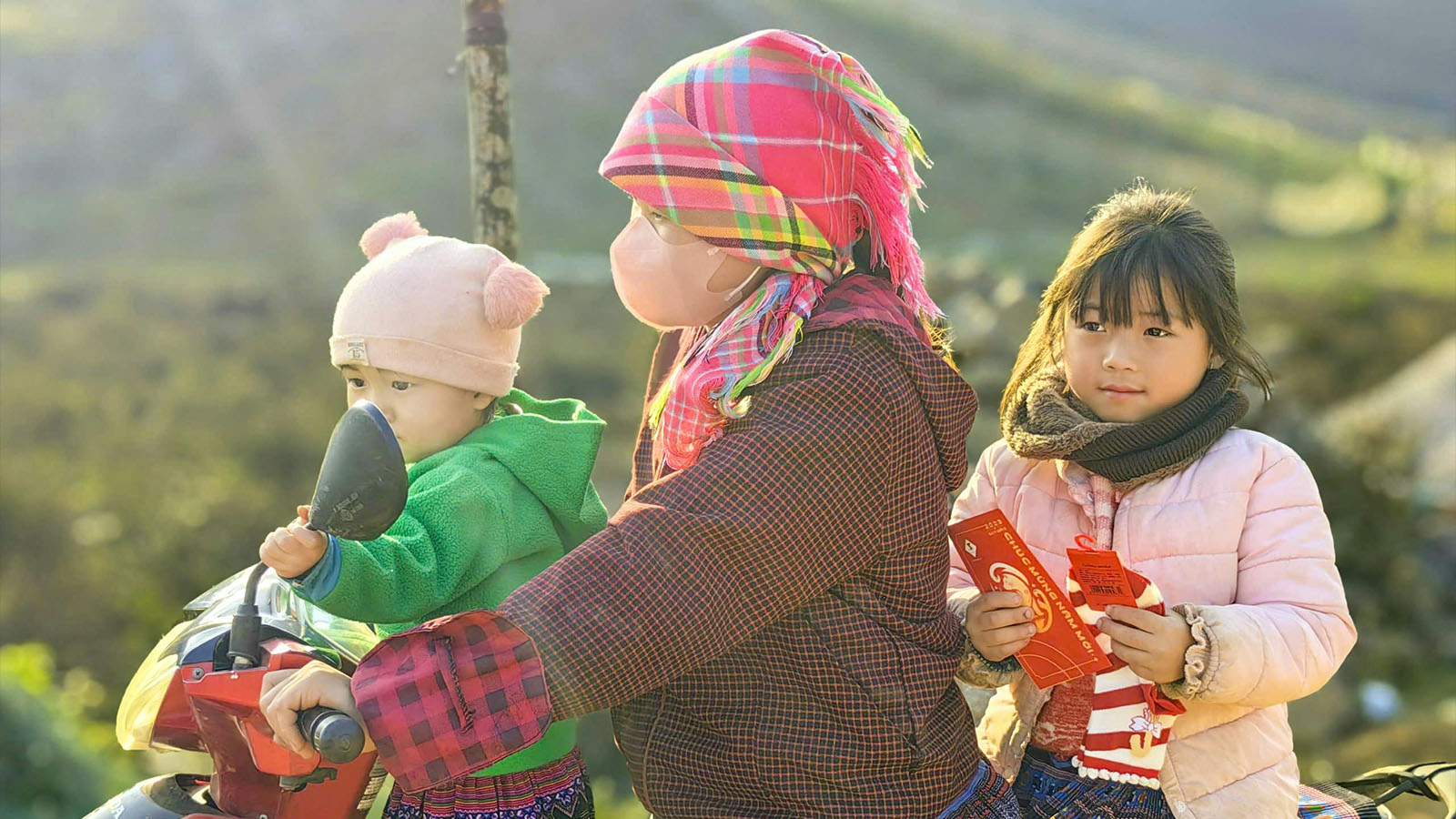





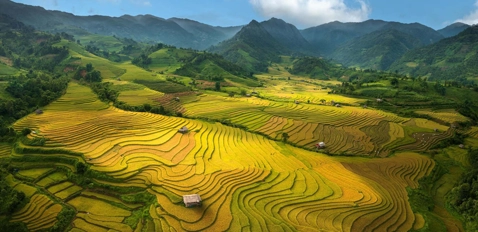





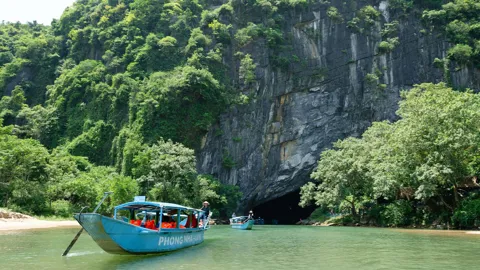
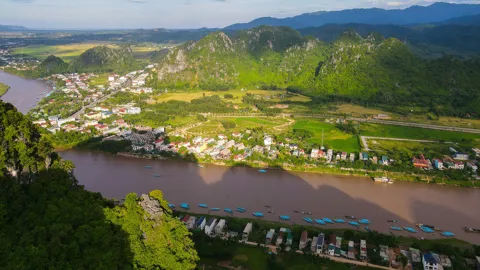







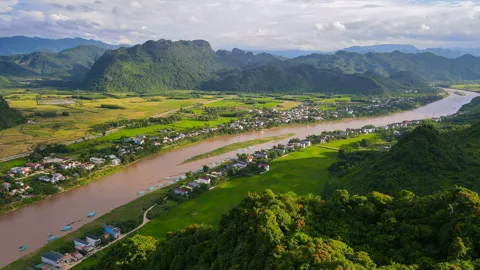













Comment